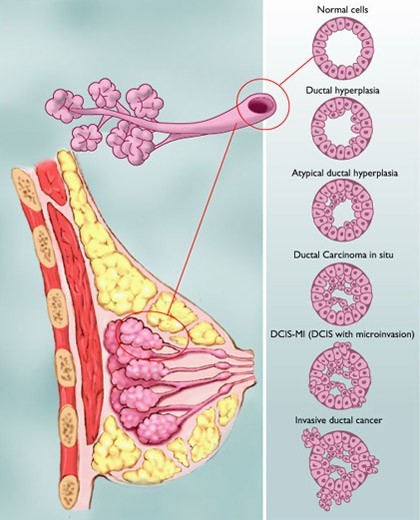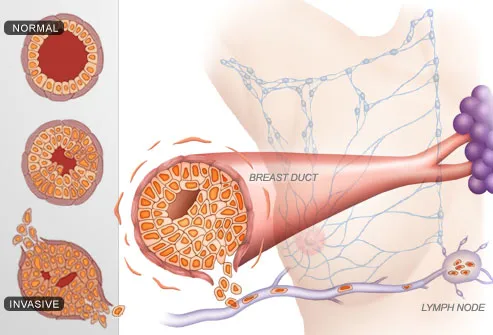Leave a Comment:
1 comment
[…] I also wrote about how early stage BC is affected by tamoxifen, WBR and lumpectomy affect overall survival. […]
Reply
Learn about conventional, complementary, and integrative therapies.
Dealing with treatment side effects? Learn about evidence-based therapies to alleviate your symptoms.
Click the orange button to the right to learn more.

I admit it. I am a cancer survivor of an “incurable” cancer who looks at breast cancer studies differently than oncologists do. The American Society of Clinical Oncology (ASCO) conducted an excellent study linked and excerpted below to examine three therapies- lumpectomy, tamoxifen and whole-breast radiation separately and combined for women who have been diagnosed with breast cancers of 1 cm or less.

Statistical analysis slice and dice the results below. I have tried to organize and highlight the numbers as best I can. The study concludes that tamoxifen and whole-breast radiation reduce risk of IBTR relapse yet there is no mention, no discussion anywhere of the negative side effects of these therapies.
The one sentence that relates to this issue a tiny bit is “Survival in the three groups was 93%, 94%, and 93%, respectively.” Meaning, the overall survival is about the same regardless. The American Cancer Society lists a number of secondary cancers caused by both tamoxifen and whole-breast radiation.
I am both a cancer survivor and cancer coach. I have lived in complete remission from my “incurable cancer” by living an evidence-based, non-toxic, anti-cancer lifestyle through nutrition, supplementation, bone health, detoxification and more.
Have you been diagnosed with early stage breast cancer? Scroll down the page, post a question or comment and I will reply to you ASAP.
Thank you,
“Purpose: This trial was prompted by uncertainty about the need for breast irradiation after lumpectomy in node-negative women with invasive breast cancers of < 1 cm, by speculation that tamoxifen (TAM) might be as or more effective than radiation therapy (XRT) in reducing the rate of ipsilateral breast tumor recurrence (IBTR) in such women, and by the thesis that both modalities might be more effective than either alone…
After lumpectomy, 1,009 women were randomly assigned to TAM (n 336), XRT and placebo (n 336), or XRT and TAM (n 337). Rates of IBTR, distant recurrence, and contralateral breast cancer (CBC) were among the end points for analysis…
Cumulative incidence of IBTR through 8 years was
XRT reduced IBTR below the level achieved with TAM alone, regardless of estrogen receptor (ER) status. Distant treatment failures were infrequent and not significantly different among the groups (P .28). When TAM-treated women were compared with those who received XRT and placebo, there was a significant reduction in CBC…
Conclusion: In women with tumors < 1 cm, IBTR occurs with enough frequency after lumpectomy to justify considering XRT, regardless of tumor ER status, and TAM plus XRT when tumors are ER positive.
“Long-term outcomes and hence the role of adjuvant therapy in patients with small (≤1 cm), node-negative breast cancer remain unclear. This study’s objective was to evaluate whether human epidermal growth factor receptor (HER)-2 status is an independent, poor prognostic marker in patients with these tumors and to identify a subgroup of patients with these small tumors who might benefit from adjuvant systemic therapy.
All patients with a diagnosis of a node-negative breast tumor measuring ≤1 cm and available HER-2 test results between January 1, 2001, and December 31, 2005, at the three Mayo Clinic sites were identified. Clinicopathologic data were compared in three groups: HER-2−, HER-2+, and triple-negative (TN) tumors. Of the 421 tumors identified, 364 (86.5%) were HER-2−, 28 (6.7%) were HER-2+, and 29 (6.9%) were TN.
The median follow-up time was 1,015 days (range, 1–2,549 days). Groups were balanced in terms of patient age and tumor histology. Eleven patients with HER-2− tumors (3.0%), seven with HER-2+ tumors (25.0%), and eight with TN tumors (27.6%) received adjuvant chemotherapy.
Follow-up data were available for 357, 28, and 28 patients in the three groups, respectively. Death rates in the three groups were 6.4% (23 of 357) (one recurrence-related death), 0% (0 of 28), and 7.1% (2 of 28) (one recurrence-related death), respectively. During follow-up, the tumor recurred in nine patients: four were HER-2−tumors (1.1%), two were HER-2+ tumors (7.1%), and three were TN tumors (10.7%).
Patients with small, node-negative breast tumors have an excellent prognosis, but HER-2+ and TN tumors appear to have a higher recurrence rate, warranting consideration for broad use and optimization of systemic adjuvant treatments…”
[…] I also wrote about how early stage BC is affected by tamoxifen, WBR and lumpectomy affect overall survival. […]
Reply